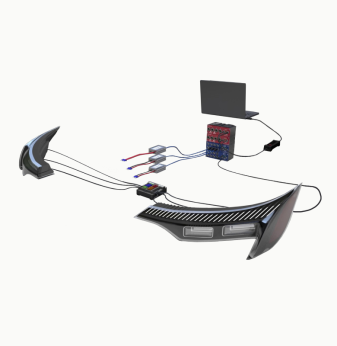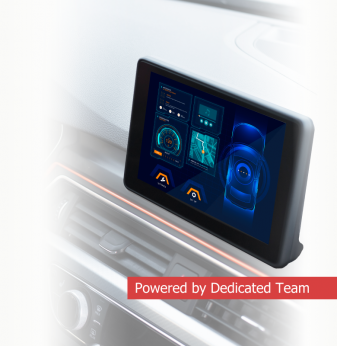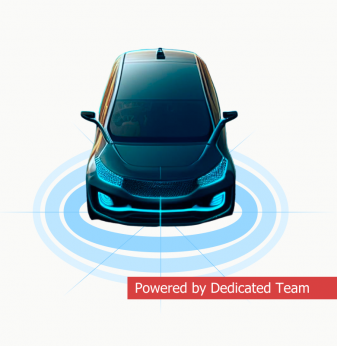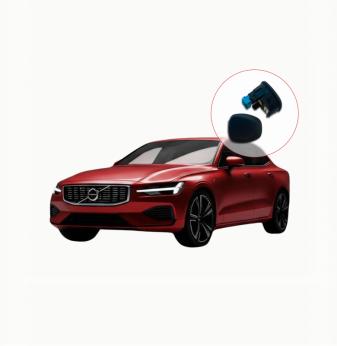Why Cybersecurity Is Critical for Modern Vehicles

The Growing Need for Cybersecurity in the Automotive Industry
Modern vehicles are no longer just mechanical machines—they are rolling computers. With features like over-the-air (OTA) software updates, advanced driver-assistance systems (ADAS), and vehicle-to-everything (V2X) communication, cybersecurity for automotive is now a top priority.
But with greater connectivity comes greater risk. Cybercriminals can exploit vulnerabilities to manipulate vehicle functions, steal sensitive data, or even take control of a car remotely.
So, how can automakers and suppliers secure today’s smart vehicles? Let’s dive into the biggest threats, key regulations, and advanced security measures shaping the future of auto cyber security.
The Biggest Cyber Threats in Connected Cars
Connected vehicles rely on complex networks of electronic control units (ECUs), cloud servers, and wireless communication protocols. Unfortunately, these systems can be hacked if not properly secured.
Here are some of the most critical cybersecurity threats in modern cars:
| Threat | Impact on Vehicles | Real-World Example |
| Remote hacking | Attackers take control of vehicle functions, including acceleration and braking. | Jeep Cherokee hack (2015) – hackers remotely disabled the brakes. |
| Malware attacks | Malicious software infects vehicle ECUs, causing system failures. | Tesla Model S vulnerability (2020) – researchers found a way to exploit the infotainment system. |
| Keyless entry system hacks | Thieves use relay attacks to unlock and steal vehicles. | Multiple brands affected by relay attacks on smart key systems. |
| Unauthorized OTA updates | Hackers inject malicious software into vehicle firmware. | Potential risk in vehicles with weak authentication for updates. |
| Data breaches | Personal driver data, GPS locations, and vehicle diagnostics can be exposed. | GPS tracking data leaks from poorly secured fleet management systems. |
Without strong security measures, these attacks could lead to serious safety risks, financial losses, and reputational damage for automakers.
Global Cybersecurity Regulations in the Automotive Industry
To combat rising cyber threats, governments and industry groups have introduced strict regulations for automotive cyber security. Here are some key standards:
| Regulation | Description | Impact on Automakers |
| ISO/SAE 21434 | Global standard for automotive cybersecurity risk management. | Requires cybersecurity measures across a vehicle’s lifecycle. |
| UN Regulation No. 155 (WP.29) | Mandates cybersecurity management systems (CSMS) for new vehicles. | Automakers must prove compliance to sell cars in the EU. |
| GDPR (General Data Protection Regulation) | Protects personal data collected by connected vehicles. | Requires strict security controls for vehicle data processing. |
Compliance isn’t optional—manufacturers must integrate cybersecurity into vehicle design, testing, and software updates.
How Automakers Are Strengthening Vehicle Cybersecurity
1. Secure Software Development
Cybersecurity starts in the development phase. Automakers are adopting secure coding practices to reduce vulnerabilities before vehicles hit the road. This includes:
- Code review and penetration testing to identify weaknesses.
- Runtime protection mechanisms to prevent unauthorized software execution.
- Secure boot to ensure only trusted firmware runs on the vehicle.

2. Protecting the CAN Bus and In-Vehicle Communication
The Controller Area Network (CAN) bus is a key part of vehicle communication but lacks built-in security. To prevent cyberattacks, manufacturers are implementing:
- Encryption to protect sensitive data.
- Message authentication to verify the source of vehicle commands.
- Intrusion detection systems (IDS) to detect and block suspicious activity.
3. Strengthening Keyless Entry Systems
Keyless entry systems are convenient but vulnerable to relay attacks, where thieves amplify the signal from a key fob to unlock a car remotely. Automakers are fighting back with:
- Ultra-wideband (UWB) technology to verify key proximity.
- Biometric authentication (fingerprint or facial recognition).
- Rolling encryption codes that change dynamically.
4. Secure Over-the-Air (OTA) Updates
OTA updates let manufacturers fix software bugs and add new features without requiring a dealership visit. However, they can also be a security risk if not properly protected. Best practices include:
- End-to-end encryption for all update data.
- Digital signatures to verify update authenticity.
- Multi-factor authentication (MFA) to prevent unauthorized access.
5. AI-Powered Threat Monitoring
Automotive cyber security is now leveraging artificial intelligence (AI) to detect and prevent cyberattacks in real time. AI-driven security systems can:
- Analyze network traffic for unusual patterns.
- Automatically block malicious activity.
- Continuously learn from cyber threats to improve protection.
The Future of Cybersecurity for Automotive Industry
As cyber threats evolve, so will vehicle security technologies. Here are some trends shaping the future of auto cyber security:
1. AI-Driven Cybersecurity
Machine learning algorithms will play a bigger role in detecting cyber threats and preventing vehicle hijacking attempts in real time.
2. Blockchain for Secure Vehicle Data
Blockchain can improve security by ensuring tamper-proof data transmission between connected vehicles, cloud servers, and IoT devices.
3. Post-Quantum Cryptography
With quantum computing advancing, automakers are exploring post-quantum cryptography to protect vehicles from next-gen cyber threats.
Conclusion
Cybersecurity for modern vehicles isn’t just about protecting data—it’s about keeping drivers safe on the road. Automakers must integrate robust security measures, including secure software development, encrypted communication, AI-powered threat detection, and regulatory compliance.
As connected cars and autonomous driving continue to evolve, automotive cyber security will remain a top priority for manufacturers, suppliers, and policymakers alike.
Looking for a secure embedded solution for your automotive project? Contact Promwad and let’s make your vehicles cyber-safe!
Our Case Studies in Automotive



































